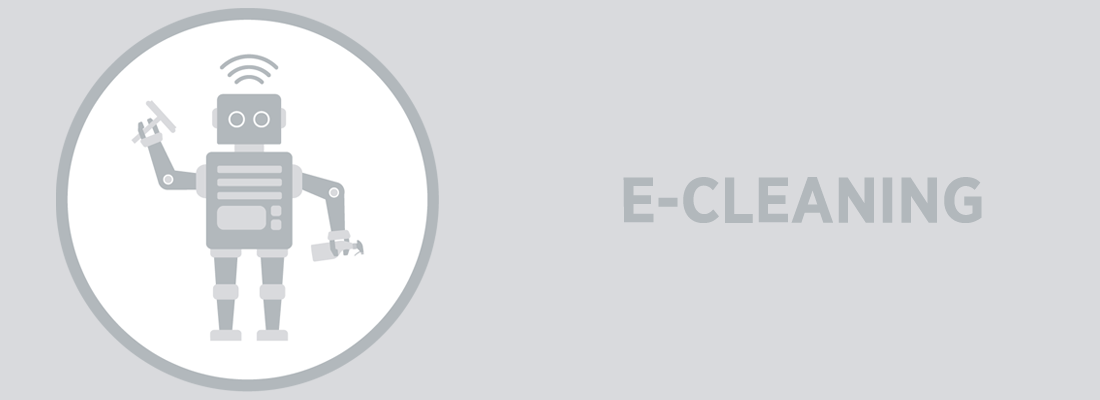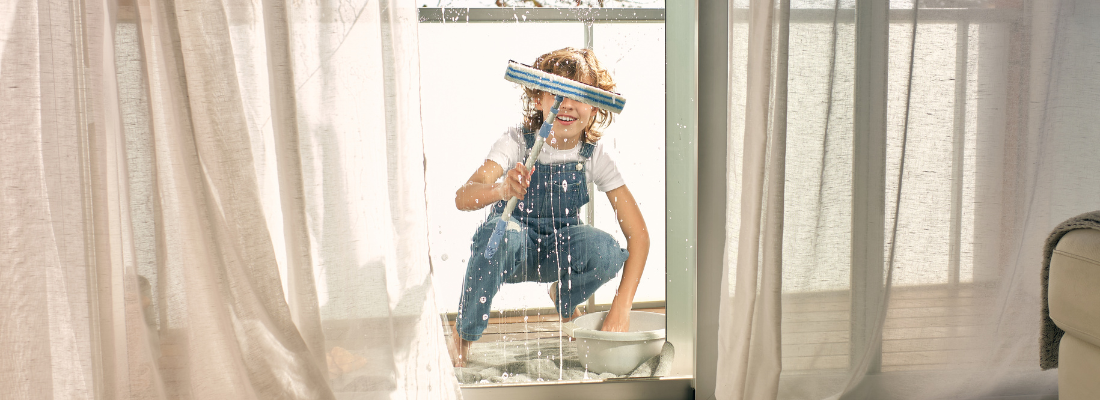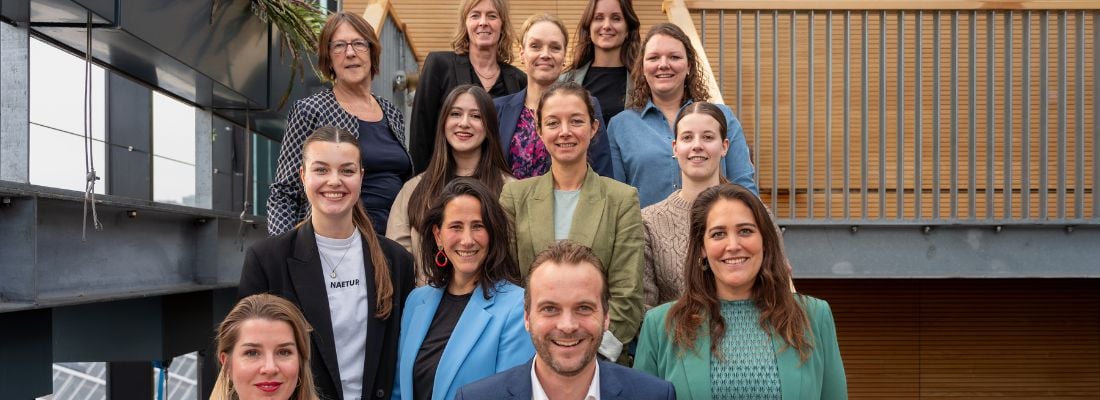Automated Cleaning: The Gamechanger in the Cleaning Industry?
Picture the scene, a large open plan office space is spotlessly clean, making the space ready for an important company team meeting. But it is not a regular cleaner who has perfected the office, but instead an automated robot vacuum. These clever and compact machines can be programmed to work automatically in a space, vacuuming the floor whilst neatly avoiding walls and obstacles. They can even provide data on their performance.
Robot vacuums truly are innovative. They can analyse the required area to clean using multiple sensors and create cleaning routes on their own. They can also be programmed to avoid certain areas. The clever in-built technology means that with every clean they can adapt and improve, offering a highly effective and targeted cleaning solution.
With such efficient technology available, are robotic cleaners going to change the way we clean our offices and public spaces forever? Commercial cleaning teams who use robots have seen a marked improvement in efficiency, with quicker timescales for cleaning jobs and improved results in cleanliness.
So, could there be a seismic shift towards automated cleaning in the coming years? According to market research company Research and Markets, “the global cleaning robot market size is expected to reach $24 billion by 2026, rising at a market growth of 22.9% CAGR during the forecast period.”
The rise in automated cleaning solutions does not mean dispensing with the human touch altogether, however. As we know people who clean and perfect other peoples’ spaces have been around for millennia, but there are now tools and technology that can simply help them do a better job.
Utilising robotics as part of a commercial cleaning contract means that human resources can be better allocated to areas that can’t be covered by an automated cleaning solution. Automation is simply a way to go further with existing labour resources. Costs are also improved in the long run when integrating robotics into cleaning contracts.
Commercial cleaning robots are fast becoming the new standard for the future. In the era of Covid-19 they can reduce the reliance on large commercial cleaning teams, who may need to work together in close proximity. They provide an extremely hygienic and social distanced way to clean that helps in the global fight against infection.
They can even be used to deep clean hospitals using innovative technology such as ultra-violet light. According to a BBC News article, “UVD Robots, the Danish manufacturer of ultra-violet-light disinfection robots, shipped hundreds of its machines to hospitals in China and Europe in 2020.”
Their relevance is likely to continue to increase post pandemic too, as office space is used more sparingly and efficiently, requiring quick and effective cleaning solutions. With the likelihood of hot desking and workers dividing time between home and office fast becoming the new way of working, the office space must remain relevant. Therefore, business owners and office managers must embrace new technology that helps their business spaces stay clean and relevant.
How has the world of technology responded to the needs of the cleaning industry? Many innovative robotics companies have developed solutions for industries such as the commercial cleaning sector, whom they recognise can hugely benefit from the advantages of automation and the clever use of technology to improve efficiency.
So, a failure to invest in these technologies may well see commercial cleaning companies falling behind. Another argument in praise of automated cleaning is the fact that it embraces the ever-developing world of technology. Robotics and other technological innovations are designed to help humans, to improve our lives and make things more efficient. So therefore, any developments in automated cleaning are welcomed by those wanting to reap the benefits of technological innovations.
Because commercial office space often needs cleaning solutions on such a large scale - just think of some of the vast office blocks in the centre of cities around the world - the opportunity for automated cleaning technology to improve efficiency and cut costs is obvious. Automated solutions can also help to deal with the problem of labour shortage, as they can help to minimise the size of cleaning teams required.
Aside from their efficiency and labour-saving benefits, another advantage of these automated cleaning technologies is that they can deliver data to cleaning companies and their clients about performance. So not only is technical innovation used to get the cleaning done, technology can also provide feedback on cleaning jobs. Helping to make improvements and highlight any changes needed.
This data can in turn help commercial cleaning companies grow and make more money. By helping these companies perform better and deliver data to clients about their cleaning performance, service providers can prove their worth. This gives them the advantage they need to grow their existing contracts and thereby develop their business further.
Proven performance data will also be key in a world where advance cleaning procedures have become necessary. The data can help to improve and standardise the cleanliness of commercial spaces, something that is not only good for each individual company but is of benefit to the wider community and the world.
According to the European Cleaning Journal, “the evolution of this industry has seen a significant shift over the past few years, in large part due to innovations in the areas of robotics, IoT and cloud connectivity.”
Such innovations truly do bridge the gap between the physical and the digital. So what are the new trends in automated cleaning? Solutions that deal with highly repetitive tasks are proving popular in the commercial cleaning world, for example robotic vacuums and autonomous sweepers. The time saved by these machines enables workers to take on other tasks separately or in tandem with these highly independent floor cleaners!
Other robotic cleaning technology includes automatic floor scrubbers and burnishers. There are also robots that perform specific functions, like automated window cleaners and commercial swimming pool cleaners. Robotic lawnmowers also help to keep outdoor public spaces neat and tidy. Robots can even be used to clean beaches of rubbish.
So, it is not just office buildings that are benefiting from the rise of the cleaning robots! Other commercial spaces such as airports, hospitals and retailers are also using automated cleaning technology to improve cleanliness, drive down costs and standardise their cleaning processes.
In fact these robots are becoming an increasingly common site when we visit both public and private buildings. Prompting them to be hailed as the first robots that people will see regularly in their daily lives, quietly cleaning away and getting on with the job whilst we go about our business.
It seems that the world of technology is driving us ever further forward toward automation. It can be argued that commercial cleaning technology should be embraced as a way to help improve cleanliness and drive down costs. Automation is only likely to develop further, so can we afford not to move with the times? Soon we will get used to the futuristic sight of cleaning robots as new technology comes our way.
Interclean is an International trade show focusing on the world of commercial cleaning. We democratise the professional cleaning marketplace, by making innovation easily accessible to everybody. We will showcase the latest innovations in cleaning technology at our first upcoming edition in The RAI, Amsterdam (scheduled for 10 - 13 May 2022).
To read more about Interclean, the world's most advanced cleaning and hygiene show, visit: https://www.intercleanshow.com/amsterdam/
Share your stories with us!
Do you have an innovation or interesting news you would like to share with the professional cleaning and hygiene industry? The Interclean website and social media channels are a great platform to showcase your stories!
Please contact our press department interclean@rai.nl.
Are you an Interclean exhibitor?
Make sure you add your latest press releases to your Company Profile in the Exhibitor Portal for free exposure.
Receive the best newsletter on cleaning & hygiene - straight to your inbox!
We promise never to send you spam and you can unsubscribe at any time!





